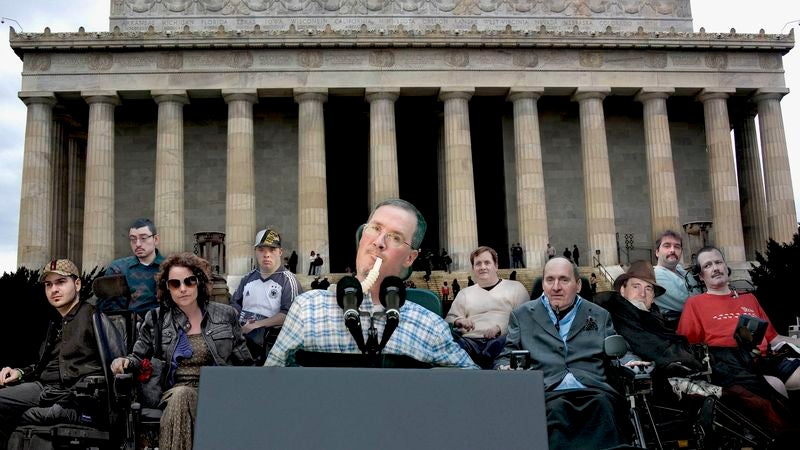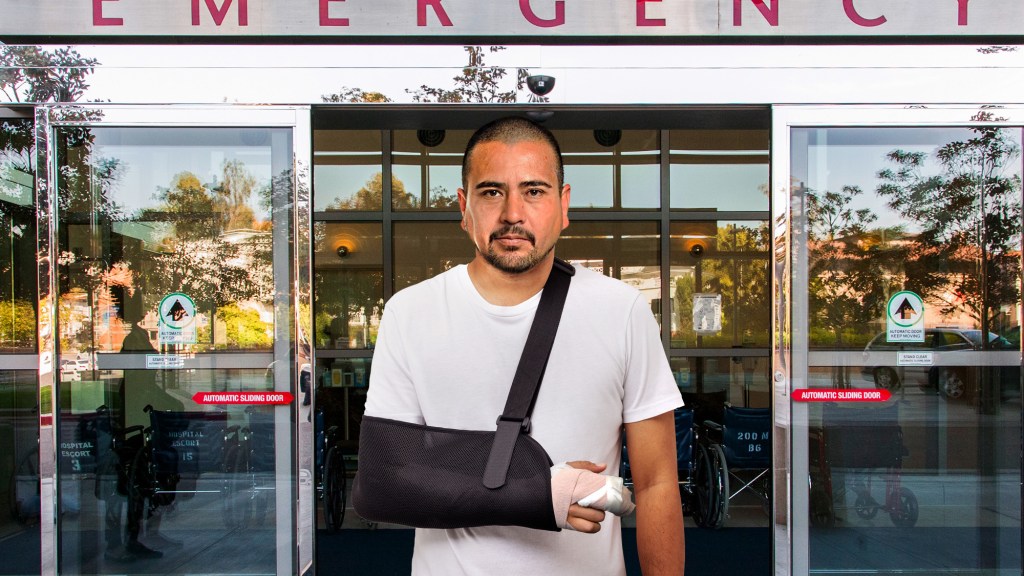WASHINGTON—Having arrived in the nation’s capital by the wheelchair-accessible-busload, tens of thousands of quadriplegics from across the United States immobilized on the National Mall Wednesday, rallying in motionless protest against restrictions on federal funding for embryonic stem-cell research.
The throngs of stationary protesters, who were unable to join hands, march from the Lincoln Memorial to the Capitol building, or hoist banners and signs or anything else into the air, called on lawmakers to subsidize the creation of new lines of stem cells from human embryos, which they sedentarily asserted could one day repair their injured spinal cords and restore motor function and sensation to their bodies.
According to preliminary estimates, as many as 60,000 came together to metaphorically stand up for their beliefs.
“Embryonic stem cells, with their unique ability to regenerate damaged tissues and organs anywhere in the body, could one day save millions of lives,” said quadriplegic and event speaker Michael Quintner, who did not exhort the crowd by racing across the stage or punctuating his points with fervent gesticulations. “And with sufficient funding, there is no limit to the breakthroughs doctors could achieve, potentially reversing not just paralysis, but cancer, diabetes, Parkinson’s, and dozens of other conditions as well.”
“We’re here to tell Congress it can no longer turn its back on the afflicted and must allow new clinical studies to move forward,” Quintner added to a lack of thunderous applause.
Calling on lawmakers to set aside party ideology and electoral gamesmanship to improve the quality of life of some 260,000 Americans living with spinal cord injuries, protesters broke into chants of “End the block / Let us walk.” The cheers were barely audible, however, and quickly fell out of unison due to the irregular intake of air through mechanical ventilators.
“Having lived with full-body paralysis since a car crash in 1998, I felt it was very important to show my support here and rally for a cure,” said 42-year-old Angela Fortin of Wheeling, WV, who, had she been able, would have unstrapped herself from her wheelchair, thrown away her incontinence pad, grabbed a bullhorn, and pleaded with her representative until her voice was hoarse. “All I want is to be able to hug my daughter again.”
According to authorities, no instances of violence were reported during the protest, and no unruly fringe of demonstrators confronted police or hurled rocks and bottles at them, because lesions in the protesters’ cervical vertebrae prevented them from generating the requisite hand movements and bipedal locomotion necessary to do so.
“For the most part, it was very peaceful,” said U.S. Park Police captain Ray Barnwell, who confirmed no arrests were made during the day’s events. “However, paramedics were called to the scene to restrain several demonstrators who suffered spastic seizures.”
While many onlookers applauded the quadriplegics’ efforts to raise awareness for stem-cell research, others dismissed the demonstration, saying it failed to take into account the complexities of the issue.
“On one side of the argument, you have people who want to walk, talk, and lead fulfilling, normal lives in which they’re not constantly worried about suffering from hypothermia because their bodies are unable to receive simple messages from their brains,” said Rep. Phil Gingrey (R-GA), a leading opponent of government-funded stem-cell research. “And on the other side, there’s the argument that suggests we should let people suffer and die even though we have the science to prevent that from happening.”
“So, you see,” Gingrey added, “it’s complicated.”
At press time, opponents of stem-cell research announced a counter-protest will be held next month during which some 400,000 embryos left over from in vitro fertilization procedures will reportedly rally for their own rights from a cryogenic container to be placed near the Capitol steps.







